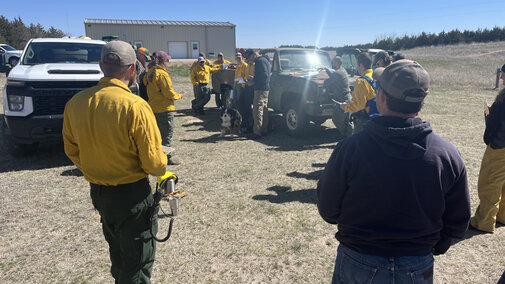With a third successful prescribed burn completed at Barta Brothers Ranch on April 21, researchers are seeing what fire can and cannot do about invasive redcedars.
“Burning isn’t a panacea for tree invasion, but it kills younger cedars,” Craig Allen, director of the project, said. “Older trees can escape fires, and have to be removed by other means, and after fire, young cedars can germinate in large numbers, so it usually takes follow-up fires to kill new young trees, until the seed source in the soil is depleted.”
The research project coordinator for Barta Brothers Ranch, Jacob Harvey, said some older trees have rebounded in the pastures burned in 2022 and 2023. When he recently moved exclosure cages set up to look at biomass after the burn, he saw saplings amongst them.
“These are saplings that are mid-shin height already that don't have any burn scarring,” he said. “So, that means they've popped up within the last one to two years, and as we know, we're not trying to stress our ecosystem as much in the way of having a one- to two-year burn return interval.”
The cattle-grazed pastures are on a four-year cycle of burning. After burning the first two pastures, researchers at Barta Brothers Ranch saw increased vigor in the grasses, increased gains in cattle, differences in grassland bird communities and minimal changes in wind erosion across burned areas.

